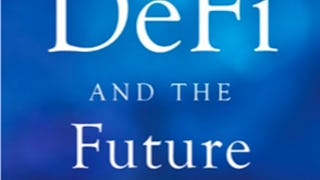DeFi and the Future of Finance is a set of four courses that focus on decentralized finance. The second course is called DeFi Primitives. It is recommended that you take the first course, DeFi Infrastructure, before this course. In this course, we talk about transaction mechanics and introduce both fungible and non-fungible tokens – or NFTs. The course explores the important issue of custody (holding private keys). The course then explores supply adjustment which includes the minting and burning of tokens. The mechanics of bonding curves are introduced. The course then explores the role of direct as well as indirect incentives in the DeFi system. We then analyze swaps or decentralized exchange. We begin by contrasting DEX with centralized exchange (e.g., Coinbase or Binance). The course details the mechanics of Automated Market Makers and provides a number of detailed examples. There is a discussion of impermanent loss as well as (legal) front-running. We end the course by exploring both collateralized and flash loans.

Gain next-level skills with Coursera Plus for $199 (regularly $399). Save now.

Decentralized Finance (DeFi) Primitives
This course is part of Decentralized Finance (DeFi): The Future of Finance Specialization

Instructor: Campbell R. Harvey
23,023 already enrolled
Included with
(461 reviews)
Recommended experience
What you'll learn
Token design and NFTs
Mechanics of supply adjustment
Decentralized exchange
Skills you'll gain
Details to know

Add to your LinkedIn profile
4 assignments
See how employees at top companies are mastering in-demand skills

Build your subject-matter expertise
- Learn new concepts from industry experts
- Gain a foundational understanding of a subject or tool
- Develop job-relevant skills with hands-on projects
- Earn a shareable career certificate

There are 4 modules in this course
The first module explores some key primitives such as how Ethereum transactions occur including the differences between externally owned accounts and contract accounts. We then explore fungible and non-fungible (NFT) tokens and miner extractable value.
What's included
3 videos2 readings1 assignment
The second module focuses on supply adjustment (minting and burning), the atomic nature of transactions in Ethereum, as well as incentives. The concept of a keeper in the Ethereum ecosystem is introduced.
What's included
3 videos1 assignment
The third module introduces decentralized exchange and explores in considerable detail Automated Market Makers. The module also introduces the idea of collateralized loans as well as uncollateralized flash loans.
What's included
5 videos1 assignment
The final module shows step-by-step how to set up a MetaMask wallet allowing the student to join the world of DeFi. The second part of the module conducts a deep dive into some of the key blockchain concepts such as digital signatures and consensus mechanisms (including Proof of Stake).
What's included
7 videos1 reading1 assignment
Earn a career certificate
Add this credential to your LinkedIn profile, resume, or CV. Share it on social media and in your performance review.
Instructor

Offered by
Explore more from Finance
 Status: Free Trial
Status: Free TrialDuke University
 Status: Free Trial
Status: Free TrialDuke University
 Status: Free Trial
Status: Free TrialDuke University
Why people choose Coursera for their career




Learner reviews
461 reviews
- 5 stars
88.31%
- 4 stars
10.82%
- 3 stars
0.43%
- 2 stars
0%
- 1 star
0.43%
Showing 3 of 461
Reviewed on Nov 14, 2021
Excellent course in preparation for the Flare Finance platform to be released soon.
Reviewed on Jul 12, 2022
I like the way the professor communicates in this course. He is very clear and I can understand him. Thank-you.
Reviewed on Dec 25, 2022
Great class giving us a very clear concise overview of the Defi space. I am currently wokring my own project called Fate Finance - which has some very unique protocols.

Open new doors with Coursera Plus
Unlimited access to 10,000+ world-class courses, hands-on projects, and job-ready certificate programs - all included in your subscription
Advance your career with an online degree
Earn a degree from world-class universities - 100% online
Join over 3,400 global companies that choose Coursera for Business
Upskill your employees to excel in the digital economy
Frequently asked questions
To access the course materials, assignments and to earn a Certificate, you will need to purchase the Certificate experience when you enroll in a course. You can try a Free Trial instead, or apply for Financial Aid. The course may offer 'Full Course, No Certificate' instead. This option lets you see all course materials, submit required assessments, and get a final grade. This also means that you will not be able to purchase a Certificate experience.
When you enroll in the course, you get access to all of the courses in the Specialization, and you earn a certificate when you complete the work. Your electronic Certificate will be added to your Accomplishments page - from there, you can print your Certificate or add it to your LinkedIn profile.
Yes. In select learning programs, you can apply for financial aid or a scholarship if you can’t afford the enrollment fee. If fin aid or scholarship is available for your learning program selection, you’ll find a link to apply on the description page.
More questions
Financial aid available,


